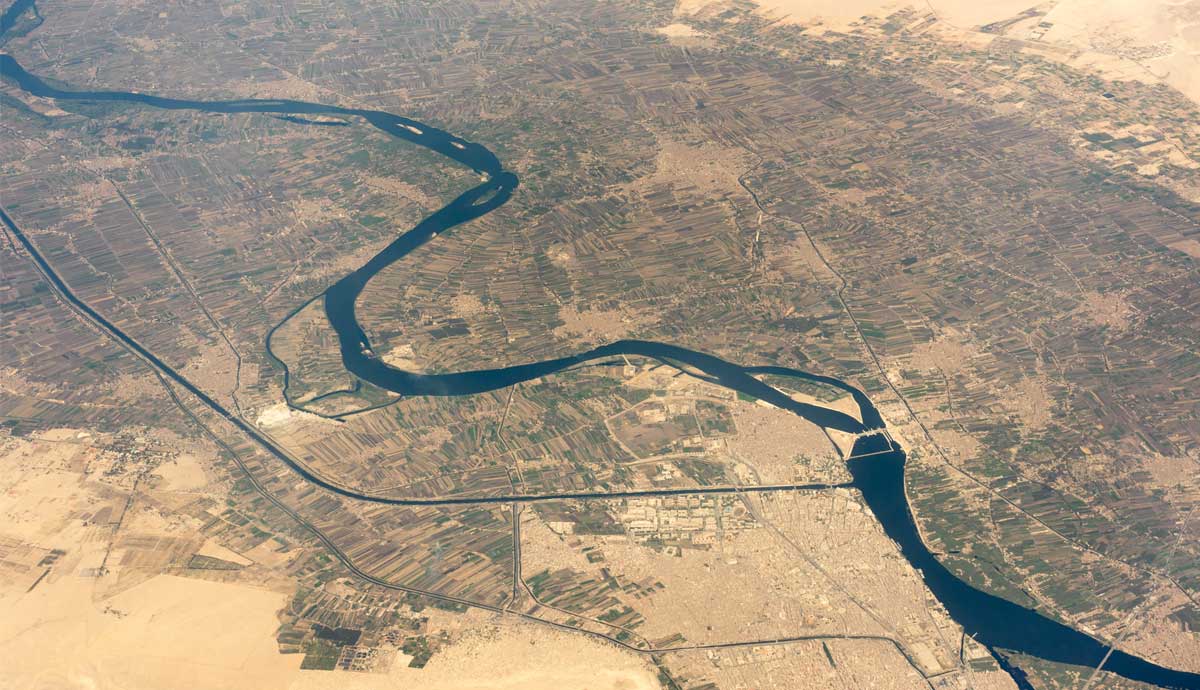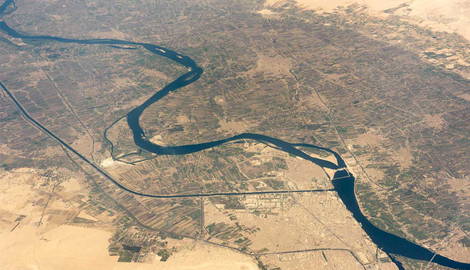
Rivers are among the world’s greatest and most sublime wonders, carving their way through landscapes to deliver life-giving water. There are an incredible 150,000 named rivers across the planet, and possibly even more that we don’t yet know about. But have you ever wondered which rivers are the largest and most impressive of them all? From the colossal Nile River and the incredible Amazon to the almighty Congo, these are the top five longest rivers in the world that keep our planet surviving and thriving.
1. The Nile River (6,650 km)

Today the river Nile is recognized by the Guinness World Records as the world’s longest river. It is approximately 4,320 miles, or 6,650 kilometers long. From its source at Lake Victoria, the Nile flows through many African nations before spilling out into the Mediterranean Sea. Along this route the Nile makes its way through or along the border of several different African countries, including Uganda, Ethiopia, Kenya, Tanzania, Egypt, Sudan, and South Sudan. Meanwhile, tributaries that feed into the river include the Blue Nile, the White Nile, and the Atbara. Given the extensive distance it travels, it is no surprise that the Nile is a major water source, particularly for farming and irrigation. It is also home for a wide variety of wildlife including hippopotami, Central African rock pythons and Nile crocodiles. The Nile was revered by the people of ancient Egypt who relied on its annual flood to irrigate their fields.
2. The Amazon River (6,400 km)

At 6,400 kilometers long, the Amazon River is extremely close in length to the Nile River. However, the Amazon River has by far the largest volume of freshwater in the world, gushing out at least 200,000 liters into the ocean each second of the day. From its headwaters in the Andes Mountains of Peru, the Amazon River runs along the edge of South America eastwards, eventually making its way into the Atlantic Ocean. Because of its sheer volume of water, the Amazon River impacts the sea level of the Caribbean, as its water is carried into the Caribbean islands, the sea level rises by 3cm.
All along this vast expanse of the mighty river is rainforest, supporting a vast network of wildlife, including the capybara, the black caiman, the Amazon River Manatee, the giant otter, piranhas, and, perhaps most famously, the pink river dolphin. The Amazon also sustains the life of around 2,000 different bird species, making it one of the world’s most vital, life-sustaining forces.
3. The Yangtze River (6,300 km)

Coming in as the third longest river in the world, China’s Yangtze River is 6,300 kilometers long. It flows throughout most of Asia, and creates an unofficial border between North and South China, making it by far the longest river in Asia. In fact, around one third of China’s entire population live in the river basin of the Yangtse. Rising in the mountains of the Qinghai province on the Tibetan plateau, the Yangtze flows along its vast distance to the East China Sea. More than 350 types of fish live in the river, along with 280 species of mammal, 166 types of reptiles and 762 varieties of bird, making it one of the most impressive wildlife sanctuaries the world has to offer.
4. The Mississippi-Missouri River (6,270 km)

The Mississippi-Missouri River might be better described as a river system than a river per se, because it is made up of the Missouri and Mississippi rivers that flow into one another, hence they are often referred to as one major river. This vast waterway spans an impressive 6,270 kilometers, making it by far the longest stretch of water in the entire United States and the fourth longest river in the world. It will come as no surprise that this extensive area of water sustains a vast array of wildlife including alligators, turtles, migratory birds and fish, particularly in the Mississippi Delta, which holds a series of precious ecosystems.
5. The Yenisei River (5,500 km)

From its headwater in northern Mongolia, the Yenisei River runs through Central Siberia into the Kara Sea, which leads out into the Arctic Ocean. Again, this waterway is made up of several rivers that flow across Russia and Mongolia, which, when measured together, span at least 5,500 kilometers. The river provides a vital lifeline for much of Russia’s population, supporting cattle ranching, agriculture, fishing and more. The river is also an important transport system, and contains a series of hydroelectric power stations that generate vast amounts of power.
What Are Some of the Other Longest Rivers in the World?
While these are the longest rivers in the world, there are plenty of other impressive water systems measuring well over 4,000 km in length.
The Yellow River (5,464 km)

The Yellow River, also known as Huanghe, is the second-longest river in China and the sixth longest river in the world, estimated at 5,464 km (3,395 miles) in length. It flows across much of China starting in Qinghai province in the east, curving up into Inner Mongolia, and emptying into the Bohai Sea just south of Beijing. It gets its name from the distinctive yellow color of the water caused by sediments. The Yellow River Basin is considered the birthplace of ancient Chinese civilization.
The Ob-Irtysh River (5,410 km)

The Ob-Irtysh river system is the seventh longest river in the world, stretching 5,410 km (3,362 miles). It flows from northwestern China and southern Russia to the Arctic Ocean. The Ob River originates in the Altai Mountains of western Siberia and flows through China and Kazakhstan before entering Russia.
The Rio de la Plata-Parana-Rio Grande (4,880 km)

The Río de la Plata–Paraná–Rio Grande is the eighth longest river in the world, stretching 4,880 kilometers (3,032 miles). It’s also the second longest river system in South America. The Río de la Plata by itself is just 290km (180 miles) long but taken as a whole with its tributaries is much longer and runs north to south through Brazil, Bolivia, Paraguay, Uruguay, and Argentina. Another accolade of the Río de la Plata is that it is the widest river in the world, reaching a staggering 220km wide in a few areas.
The Congo River (4,700 km)

The Congo River is the ninth-longest in the world and second-longest in Africa, extending a total distance of 4,700km (2,922 miles). It feeds much of East Africa, running through the Democratic Republic of the Congo, Central African Republic, Angola, Republic of the Congo, Tanzania, Cameroon, Zambia, Burundi, and Rwanda. It flows through the Congo rainforest, a flow that is the second-strongest in the world behind the Amazon.
The Amur River (4,444 km)

The Amur River is the 10th longest river in the world, extending 4,444km (2,761 miles) from Mongolia and through China and Russia. It forms the primary border between the far east of Russia and northeastern China. It is home to many unique species including the Kaluga fish, which can grow up to 5.6 metres in length.










